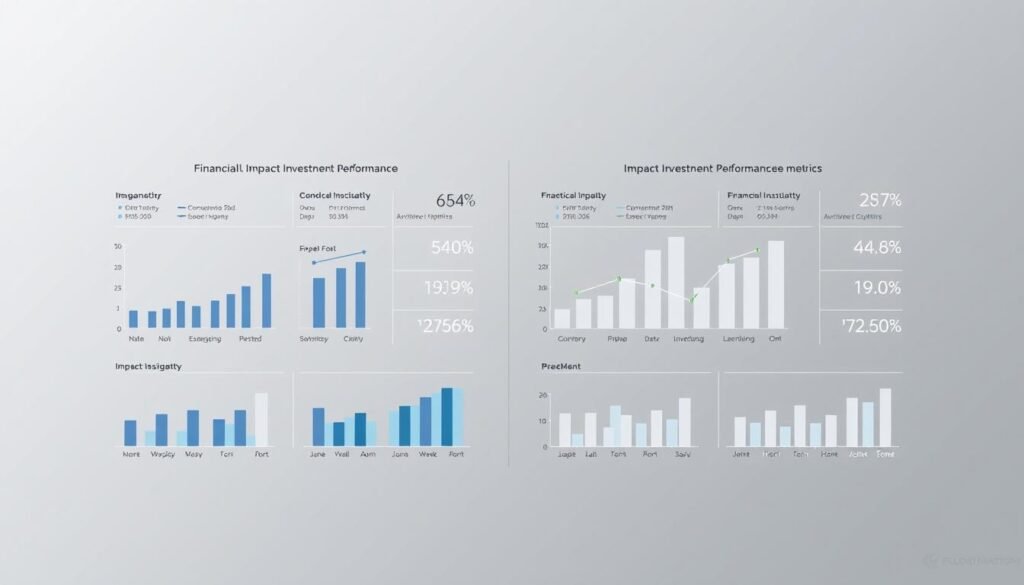What if your money could build a better world while still growing your wealth?
Many people think they must choose between profits and principles. This guide explores a different path. It shows how modern portfolios can align with personal values.
Recent data reveals a major shift. Over 70% of UK investors want their funds to do good. In the U.S., sustainable assets reached $6.5 trillion in 2024.
This approach represents a fundamental change from traditional methods. It considers environmental, social, and governance factors alongside financial analysis.
Our comprehensive guide will help you understand this evolving landscape. We compare sustainable strategies with conventional options to help you make informed decisions.
Key Takeaways
- Sustainable investing represents a significant shift from traditional investment approaches
- ESG factors now influence trillions of dollars in managed assets globally
- Most modern investors want their money to generate both financial returns and positive change
- Understanding sustainable options helps make better portfolio decisions
- This guide provides comprehensive comparisons between different investment strategies
- Proper analysis can help balance financial goals with personal values
- The sustainable investing market continues to grow rapidly each year
Understanding ESG Impact Investing vs. Conventional Investment Strategies
How do modern portfolio strategies differ from traditional wealth-building approaches? The answer lies in their fundamental priorities and measurement systems.
Today’s market offers multiple paths for growing your capital. Each path follows different principles and serves different purposes.

Defining ESG Impact Investing and Its Core Principles
This approach combines financial analysis with broader considerations. It evaluates environmental, social, and governance factors alongside traditional metrics.
Three core principles guide this methodology. Investors expect reasonable financial returns while intentionally creating positive change.
Measurement forms the third critical component. Investors track both financial performance and social/environmental outcomes.
Traditional Investment Approaches: Focus on Financial Returns
Conventional strategies prioritize monetary gains above other considerations. They typically exclude ethical or sustainability factors from decision-making frameworks.
These methods focus exclusively on financial metrics and market performance. The primary goal remains maximizing profit through various market opportunities.
Risk assessment concentrates on market volatility and economic factors. Social or environmental concerns rarely influence investment selections.
Key Historical Development Differences Between the Two Approaches
The terminology emerged through different pathways at different times. ESG originated from public sector initiatives in 2004.
International organizations collaborated to integrate these considerations into mainstream finance. They wanted financial institutions to address broader societal issues.
Impact investing developed through private sector efforts three years later. The Rockefeller Foundation helped create this term to describe intentional dual-purpose investments.
These distinct origins created different philosophical foundations. One approach emphasizes risk management while the other focuses on intentional change creation.
Despite their different starting points, both methods now address modern investor demands. They’ve evolved to meet growing interest in sustainable business practices.
The selection criteria show fundamental differences between these strategies. One considers comprehensive factors while the other focuses narrowly on financial data.
Framework vs. Strategy: Fundamental Structural Differences
What separates a framework from a strategy in sustainable finance? The distinction lies in their core purposes and applications. One serves as a lens for evaluation while the other represents an active deployment method.
ESG as a Risk Assessment and Management Framework
This analytical approach examines how organizations handle sustainability concerns. It evaluates corporate behavior through environmental, social, and governance criteria.
The methodology typically relies on backward-looking measures from normal operations. It helps identify potential risks and opportunities within existing companies.
Asset managers must apply this framework in beneficiaries’ best interests. This creates important fiduciary considerations different from other approaches.
Impact Investing as an Intentional Outcome-Based Strategy
This method represents an active selection process for capital allocation. Investors choose opportunities based on their potential to create positive change.
The strategy focuses on achieving specific social and environmental benefits. These funds stand alone with clear stated intentions that participants opt into knowingly.
This approach equally weights financial, social, and environmental considerations. It represents a forward-looking orientation targeting future outcomes.
Backward-Looking vs. Forward-Looking Investment Approaches
One method analyzes historical performance data and established practices. The other targets future results and measurable improvements.
These temporal differences significantly affect decision-making processes. They also influence how portfolios get constructed and managed over time.
The structural variations determine how sustainability gets integrated into selections. Understanding these distinctions helps investors align methods with personal goals.
Performance and Measurement: Comparing Financial and Impact Returns
How do you measure success when your money works for both profit and purpose? Modern approaches require looking beyond traditional financial metrics.
Both conventional and value-aligned methods aim for growth. They simply measure achievement through different lenses.

Financial Return Expectations in Conventional vs. ESG Impact Investing
Traditional portfolios focus exclusively on maximizing monetary gains. Success means beating market benchmarks and achieving target returns.
Value-conscious approaches seek competitive financial results while creating positive change. They accept that some opportunities might be excluded for ethical reasons.
Research shows companies with strong sustainability practices often achieve higher valuations. They typically demonstrate better long-term performance.
Measuring Social and Environmental Impact Alongside Financial Performance
Conventional analysis uses metrics like ROI and total return. These numbers tell only part of the story for modern portfolios.
Additional measurements track social and environmental benefits. Examples include carbon reduction, diversity improvements, or community development.
Third-party agencies provide crucial verification data. Firms like MSCI and Morningstar offer standardized assessment frameworks.
The collinearity principle shows how financial and social results often reinforce each other. Well-managed companies typically perform better in both areas.
Risk Mitigation Strategies Across Both Investment Approaches
Traditional methods use diversification and hedging techniques. They focus primarily on market volatility and economic factors.
Value-aligned strategies incorporate additional screening criteria. They avoid companies with poor environmental or social practices.
Businesses failing to manage these factors often face higher capital costs. They may experience more volatility and accounting issues.
Proper risk assessment now includes sustainability considerations. This comprehensive approach identifies companies with better long-term prospects.
Measurement challenges exist in both approaches. Impact quantification requires specialized metrics beyond traditional analysis.
Active engagement and consistent data help overcome these hurdles. The result is more informed investment decisions that balance multiple objectives.
Conclusion: Choosing the Right Investment Approach for Your Goals
Which path helps your money match your mission? Both methods offer distinct advantages for modern portfolios.
One framework analyzes existing business practices through environmental and governance lenses. The other strategy actively targets social and environmental benefits.
Start by identifying causes that matter most to you. Consider your financial objectives and risk comfort level.
Many people begin with sustainable funds as an accessible entry point. Others prefer deeper, measurable change through targeted capital allocation.
Third-party resources provide valuable data for informed decisions. Platforms like Morningstar and Bloomberg offer objective assessments.
Always verify claims to avoid misleading practices. Your choices today shape tomorrow’s world while building personal wealth.
FAQ
What is the main difference between ESG and impact investing?
ESG serves as a risk and evaluation framework that considers environmental, social, and governance factors. Impact investing is a strategy focused on generating measurable positive social or environmental outcomes alongside financial returns.
Can ESG and impact investing deliver competitive financial returns?
Yes, many studies show that portfolios integrating ESG factors can perform on par with or even outperform traditional investments. Impact funds also aim for market-rate returns while targeting specific positive outcomes.
How do investors measure success in impact investing?
Success is measured using both financial metrics and impact metrics. Investors track specific outcomes like carbon reduction, community development, or access to education alongside traditional financial performance indicators.
Do ESG and impact investing help manage risk?
Yes, both approaches can help identify and mitigate risks. ESG analysis reveals potential regulatory, reputational, or operational risks, while impact strategies often focus on long-term sustainability and resilience.
Are these strategies suitable for all types of investors?
These approaches are accessible to various investors, from individuals to large institutions. Many mutual funds, ETFs, and specialized funds now offer options aligned with both ESG and impact principles.





